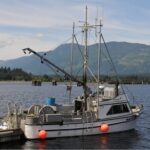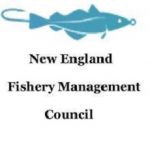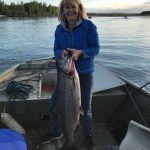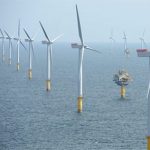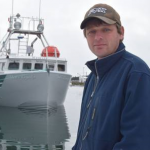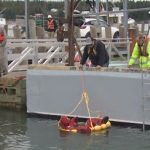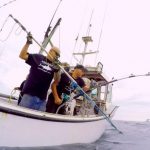Tag Archives: University of Delaware
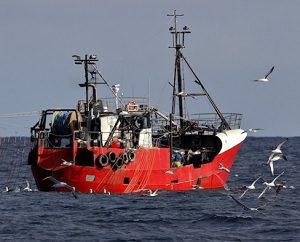
New England Fishing Communities Being Destroyed by ‘Climate Shocks’: Study
The climate crisis is hurting the New England fishing industry, claims a new report published Monday, with a decline of 16% in fishing jobs in the northeastern U.S. region from 1996 to 2017 and more instability ahead. University of Delaware researcher Kimberly Oremus’ paper, “Climate variability reduces employment in New England fisheries,” was published in the Proceedings of the National Academy of Sciences. >click to read< 10:28
New England fishermen losing jobs due to climate: study – While other studies have used temperature projections as a proxy for climate change, Oremus chose the North Atlantic Oscillation, a climate index based on the difference in sea-surface pressure between two points in the Atlantic Ocean—at the Azores and near Iceland. >click to read<
As US’ first offshore wind farm takes root, study indicates wind may be more powerful, turbulent than expected
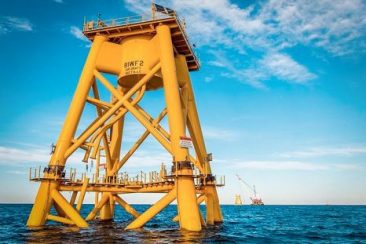 University of Delaware researchers report in a new study that offshore wind may be more powerful, yet more turbulent than expected in the North Eastern United States. The findings, published in a paper in theJournal of Geophysical Research: Atmospheres, could have important implications for the future development of offshore wind farms in the U.S., including the assessment of how much wind power can be produced, what type of turbines should be used, how many turbines should be installed and the spacing between each. The paper’s main finding is that atmospheric conditions around Cape Wind are predominantly turbulent, or unstable, which is in stark contrast to prevailing data from European offshore wind farms in the Baltic Sea and the North Sea. “By contrast, our study found that wind conditions at Cape Wind are unstable between 40 and 80 percent of the time, depending on season and time of day,” Read the story here 20:55
University of Delaware researchers report in a new study that offshore wind may be more powerful, yet more turbulent than expected in the North Eastern United States. The findings, published in a paper in theJournal of Geophysical Research: Atmospheres, could have important implications for the future development of offshore wind farms in the U.S., including the assessment of how much wind power can be produced, what type of turbines should be used, how many turbines should be installed and the spacing between each. The paper’s main finding is that atmospheric conditions around Cape Wind are predominantly turbulent, or unstable, which is in stark contrast to prevailing data from European offshore wind farms in the Baltic Sea and the North Sea. “By contrast, our study found that wind conditions at Cape Wind are unstable between 40 and 80 percent of the time, depending on season and time of day,” Read the story here 20:55
HabCamV4 sees large numbers of young scallops off Delaware Bay
 “We’re seeing many swimming scallops and other behaviors that are providing insights into how the animals live and interact in that environment,” Hart said. “Baby scallops are seen attached to adults, and other scallops are swimming above the bottom, perhaps to diffuse to areas that are less dense and provide more room to grow.” The NEFSC’s annual sea scallop survey is conducted in three segments or “legs,” each ranging from 11 to 14 days, between May and July, beginning with the Mid-Atlantic Bight, then Southern New England and ending on Georges Bank. Read the rest here 15:10
“We’re seeing many swimming scallops and other behaviors that are providing insights into how the animals live and interact in that environment,” Hart said. “Baby scallops are seen attached to adults, and other scallops are swimming above the bottom, perhaps to diffuse to areas that are less dense and provide more room to grow.” The NEFSC’s annual sea scallop survey is conducted in three segments or “legs,” each ranging from 11 to 14 days, between May and July, beginning with the Mid-Atlantic Bight, then Southern New England and ending on Georges Bank. Read the rest here 15:10
Researchers developing fishing forecast to help watermen avoid vulnerable species
 When fishermen are at sea to catch monkfish, fluke or other commercial seafood, much larger fish can unintentionally wind up in their nets. Hauling in sand tiger sharks and Atlantic sturgeon can be particularly problematic—not only are they big, they are protected by strict regulations. Read more here 10:51
When fishermen are at sea to catch monkfish, fluke or other commercial seafood, much larger fish can unintentionally wind up in their nets. Hauling in sand tiger sharks and Atlantic sturgeon can be particularly problematic—not only are they big, they are protected by strict regulations. Read more here 10:51
Research set-aside helps sustain Atlantic sea scallop fishery
 A recent article in Nation’s Restaurant News calls the scallop “the mollusk of the moment,” but just 20 years ago, the U.S. fishery for Atlantic sea scallops was unsustainable, with the population near record lows and fishing at a record high. Now, a research set-aside program, funded entirely by proceeds from selling a , is helping to ensure that the fishery remains healthy. Read more here 09:17
A recent article in Nation’s Restaurant News calls the scallop “the mollusk of the moment,” but just 20 years ago, the U.S. fishery for Atlantic sea scallops was unsustainable, with the population near record lows and fishing at a record high. Now, a research set-aside program, funded entirely by proceeds from selling a , is helping to ensure that the fishery remains healthy. Read more here 09:17
Researchers declare success in 15-year quest for artificial bait – the scent of horseshoe crab!
For more than 15 years, University of Delaware researcher Nancy Targett has been on an odd and elusive quest to identify just what it is in the scent of a horseshoe crab that makes it such an alluring bait. Alas, she never succeeded.
She still doesn’t know what precisely constitutes eau de crab. continued



































